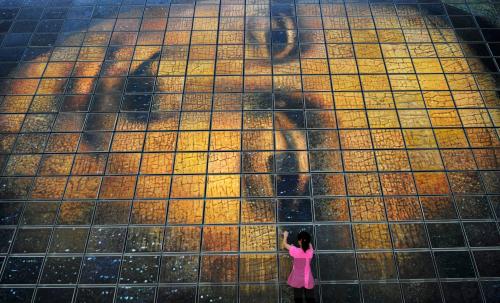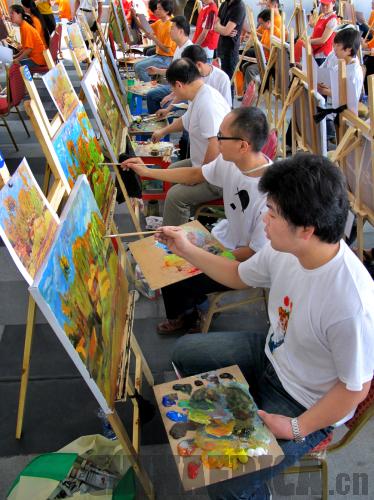|
 |
|
Dafen Lisa at the Shanghai World Expo (by Lin Yiguang) |
A single village of 300 residents in south China produces half of the world's oil paintings. This may sound unlikely, but is the product of decades of work. Dafen, a small village with few Western art influences and no educational art institute, is now one of the world's leading producers of oil paintings.
During the First Roundtable on China and Africa Cultural Industries held in June of this year, over 20 officials from the cultural departments of African governments paid a visit to Dafen Village in Shenzhen, Guangdong Province.
Shenzhen is a young city with a history that only spans a few decades. In 1980, a year after the city was founded, the Chinese Government established the country's first special economic zone in Shenzhen, promoting the city to adopt economic reforms and open up to the outside world. Since then, fast economic growth has made Shenzhen renowned around China and the world. In 2008, UNESCO named Shenzhen a City of Design for its well-developed cultural and creative industries, of which Dafen Village is a big part.
Louise Graham is the director of the South African Ministry of Art and Culture's Department of International Relations. While visiting Dafen, she saw a world of art. Oil paintings are displayed from floor to ceiling and in the windows of every shop along both sides of each road. "The man who came up with the idea [to group all of these shops and galleries together] is a genius," she said.
The man who created this is Huang Jiang, a Hong Kong art dealer and one of the ambitious businessmen attracted to Shenzhen in 1989 by the Central Government's preferential policies and the city's cheap labor force. Huang chose to set up his business in Dafen because of its low rent prices and advantageous location. He brought a dozen oil painters with him and rented a private house. This became a base for the manufacture and overseas trading of commercial oil paintings. As the first painting dealer to set up shop in the village, Huang later came to be known as the "Creator of Dafen Oil Painting Village."
 |
|
Young artists pursue their dream in Dafen (Cai Huisheng) |
News spread and painters gathered, including art school graduates and professional artists who hoped to find work and use their artistic talents to make a living in the dynamic city. Some worked for a production company while others painted for commissions.
Dafen's art industry was initially based on commercial oil painting, especially cheap, well-executed replicas of famous Western masterpieces. Many of them were shipped to Europe and the United States. The village's first oil painting market was established in 1999. Around 2005, 70 percent of oil paintings in the Western market were produced in China, 80 percent of which were made in Dafen Village. Dafen's painters have allowed many Western families to own art masterpieces for affordable prices.
No longer a small village, Dafen Oil Painting Village now covers an area of 4 square km, is the site of more than 1,100 replica galleries, and employs more than 6,000 painters. It's a driving force in the development of China's cultural industries.
|